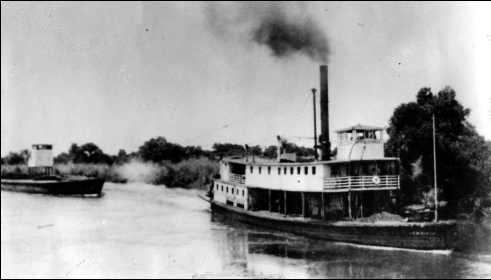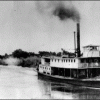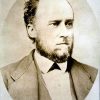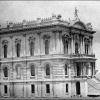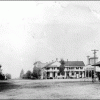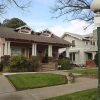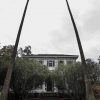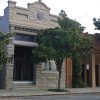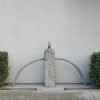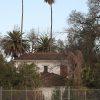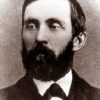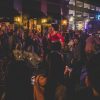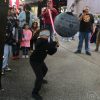The BigView
Modesto 150
By Chris Murphy
Modesto turns 150 years old this year. Throughout 2020 as part of the Modesto 150 celebration, we will be featuring Modesto’s history all the way from the early days through today. We will try to make this interesting, fun to read, and lay it out in bite sized pieces that hopefully will encourage you to learn more at the McHenry Museum, and other history sites like HistoricModesto.com where some of these images have come from. We will be covering our full history this year by the decade, and if you want to contribute, please email me at chrism@modestoview.com
You have heard bits and pieces about our history over the years. You have heard names like Ralston and McHenry. You see streets named Coffee, Veneman, Briggsmore, Carver and wonder who are they named after. You see power black outs in other areas of the state but why don’t we have those? What city was one of the first in the USA to have an electrical grid, or even a municipal airport? What city became the county seat, thanks to the expansion of the railroad? Modesto USA. A Classic American City.
The Railroad changed everything.
When you think about it, the railroad built the USA and created our cultures. In the 1800s, as the settlers spread west, the railroad would link both coasts of our growing country, where people moved safely cross country where just a decade earlier, it would take months and cost lives to venture west. Needless to say, gold changed California in the 1850s and mining cities like LaGrange popped up across the foothills. The regional Central Pacific and Southern Pacific railroads of Crocker, Stanford, Hopkins and Huntington, aka “the Associates” would create new cities and vital stations for goods and services. Many cities that were on the intersection of the North South and the east west railroads would become major national hubs.
When the Golden Spike was hammered in 1869, transcontinental travel was born and our county would be connected. Before the railroad, there were a bunch of towns along the rivers that served as ferry stops as California started to evolve and commerce moved along the rivers. The towns of Paradise, and Adamsville located west of Modesto were early thriving settlements with river ferries. In an early bout of NIMBYism, Paradise and Empire both rejected this new “railroad”, so it was built through a new area, that would become Modesto. These towns quickly disappeared when the new town was built. The Central Pacific Railroad was built through Modesto in 1870, then an unnamed community.
Who were these people?
Robert McHenry and William Ralston were both farmers and financiers. William Ralston was a San Francisco financier who founded the Bank of California and built the famous Palace Hotel. He also served on the Board of the Central Pacific Railroad. In the 1870s he was also part of the team that surveyed what would become Modesto Irrigation District and help pass the Congressional act of 1873 to implement irrigation and water supplies. When Modesto was to be named Ralston in his honor, he declined prompting the Spanish word for “modesty” and the city was named Modesto. He would die in 1873 following a financial collapse of his bank and empire.
Robert McHenry, a descendent of the Mayflower, was born in Vermont, later moved to Ohio and then married Matlilda Hewitt of Farmington, just north of Modesto, and he began his farming and banking career building the Bald Eagle Ranch located north of what’s now Modesto. In 1883, he built the McHenry Mansion at 15th and I Street that would be one of the grandest homes in the region.
With the railroad and the rivers, Modesto would grow quickly as wheat was planted we irrigation spread. Soon a wide variety of crops were growing. Located on the railroad, and now connected to Sacramento and Oakland via rail, Modesto would become fairly cosmopolitan as founders like McHenry began to expand their empires, build churches and many of the early businesses. His son Oramil would take over the business when Robert passed away in 1890 and Modesto would be begin to grow rapidly, ending the century with a population of 4,500 people.
Here are a couple of key timelines and hey historic locations.
1855 – Modesto Cemetery – 1001 Scenic
1856 – Pioneer Cemetery – 905 Scenic
1870 – Oldest House In Modesto is the Church House, located at 302 Burney St
It was originally built in 1868 in the former town of Paradise and then moved to Burney in 1870 after Modesto was designated the rail road path. It was built by Luke Ancil Church (December 28, 1831 – February 6, 1901), who used lumber from his hotel at Don Pedro Bar.
1871 The Turner Hitching Post 1104 14th 1871 – This one of the few remaining elements from the founding days you can still visit today.
1874 – First 4th of July Parade that still runs today, thanks to the Modesto Kiwanis Club.
1879 – Modesto starts to “clean up” with San Joaquin Regulators who, vigilante style, cleaned up and closed down the opium dens of Chinatown and the places of ill repute along Front St, (now 9th) and other downtown places until 1884
1882 – The McClure Place was built on the banks of Dry Creek in 1882 to replace an earlier home destroyed by fire in 1875. Bailey Peyton Hogin, a Confederate army veteran, who arrived in California in 1870. The farm was sold after the turn of the century (1904) to Ernest McClure.
1880s – Modesto’s first baseball team, the Modesto Red Caps evolved from a community team that began in 1872
1883 – McHenry Mansion – The grandest of all of the homes in early Modesto, built by Robert McHenry. Take a tour today at 15th and I St.
1884 – The first newspaper in Modesto was the Daily Evening News and would later change names and evolve to the Modesto Bee of today.
1886 – Modesto High School’s First Graduating Class with 10 people
1891 – Electric lights first lit Modesto
1894 – The Modesto Herald Building – 726 10th St was built by J.D. Spencer, editor of the Modesto Daily Evening News stands today as the oldest commercial structure still housing a business
1890 – Lish Residence, 125 Poplar Avenue, 1890
Images from the McHenry Museum, MJ Mangano/ModestoView and HistoricModesto.com


